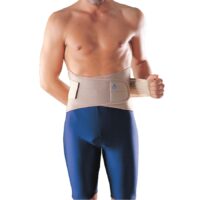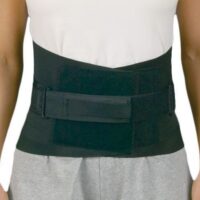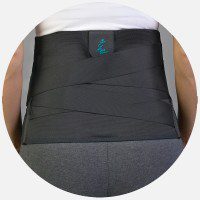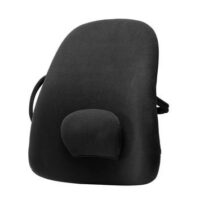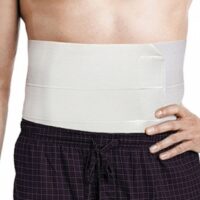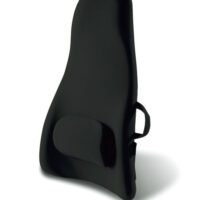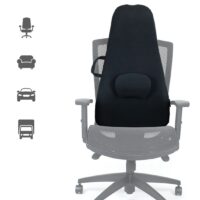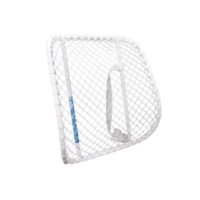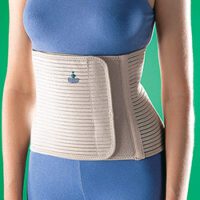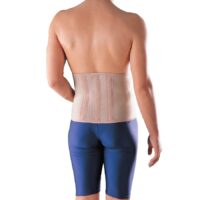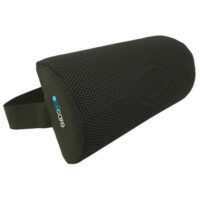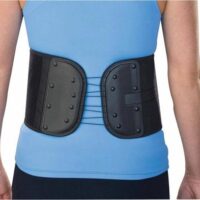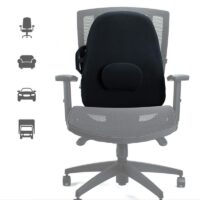Bulging Disc
Article by John Miller
Bulging Disc
A Comprehensive Guide from a Physiotherapist’s Perspective

Why Understanding Bulging Discs is Crucial
Understanding spinal disc injuries, especially bulging discs, is essential for effective management and treatment. These injuries can cause significant discomfort and affect your daily life. Early intervention and informed choices are key to managing and overcoming spinal disc injuries.
How Spinal Discs Get Injured
Spinal discs play a crucial role in your back’s flexibility. However, they are prone to various conditions, including bulging and herniated discs. A bulging disc extends beyond its usual boundary without tearing the outer layer, known as the annulus fibrosus. In contrast, a herniated disc, or slipped disc, involves the nucleus pulposus breaking through the annulus fibrosus. Ruptured discs represent a more severe injury, entailing the complete extrusion of the disc’s core material.
Diverse Disc Injuries Explained
- Bulging Disc: The disc pushes beyond its normal space, often causing nerve pressure and discomfort.
- Herniated Disc (Slipped Disc): Occurs when the disc’s inner gel leaks through a tear in the outer layer, potentially causing nerve irritation and severe pain.
- Ruptured Disc: An advanced stage of herniation where the disc’s inner material fully escapes the outer ring.
- Degenerative Disc Disease: Chronic breakdown of a disc, leading to diminished shock absorption. Read more: Degenerative disc disease
- Discitis: An infection in the disc space, causing significant inflammation.
- Schmorl’s Nodes: Instances where disc material intrudes into the vertebral body, sometimes linked with Scheuermann’s disease.
Causes of Bulging Discs
Bulging discs result from various factors, including cumulative stress, physical trauma, and genetic predispositions. Poor posture, sudden strains from mishandling weights, or inherent structural vulnerabilities in the disc can contribute to this condition.
Diagnosing Bulging Discs
Diagnosis typically involves evaluating symptoms like back pain, sciatica, and neurological signs such as numbness or tingling. Physical examinations and reviewing medical history are critical in identifying these conditions. Recent advancements have highlighted the importance of MRI and CT scans in providing detailed imagery of soft tissue and spinal anatomy, crucial for pinpointing the injury’s location and severity.
Treatment for a Bulging Disc
Treatment varies, but physiotherapy plays a central role. Techniques include:
- Medications: For pain and inflammation reduction.
- Physiotherapy: Tailored manual techniques, exercises, and modalities to restore spinal flexibility, strength, and function, alleviating discomfort.
- Acupuncture and Dry Needling: Effective in reducing pain by targeting nerves and muscle trigger points. Read more: Acupuncture; Dry Needling
- Cognitive Behavioural Therapy (CBT): Useful for pain management and developing coping skills.
- Lifestyle Modifications: Ergonomic changes and weight management to support spinal health.
- Epidural Steroid Injections: Aimed at reducing inflammation near the nerves or spinal cord.
- Surgery: Reserved for severe cases where conservative methods are insufficient or there is a significant neurological deficit.
The Role of Physiotherapy in Treating Bulging Discs
Physiotherapy is vital in the recovery process, providing pain relief, enhancing mobility, and strengthening the spine’s support system through personalised exercises and preventive education. Recent trends in physiotherapy emphasise the importance of core strengthening exercises and real-time ultrasound-guided back rehabilitation in treating bulging discs.

New Research on Bulging Discs
Recent studies have shown the effectiveness of non-surgical treatments in managing bulging discs. A systematic review found that conservative treatments, including physiotherapy, significantly improved pain and function in patients with lumbar back injuries. Other studies have highlighted the benefits of core stability exercises in reducing pain and improving function in patients with chronic low back pain due to disc herniation.
Prognosis for Bulging Discs
The prognosis varies based on the injury’s nature and severity. With timely and appropriate treatment, most individuals with a bulging disc experience significant improvement.
Preventive Tips
Incorporating ergonomic adjustments, regular strength and core training, and proper lifting techniques are essential in preventing disc injuries.
Conclusion
Addressing spinal disc injuries, particularly bulging and herniated discs, requires an integrated treatment approach. Active participation in physiotherapy and a proactive approach towards spinal health are critical for successful management and favourable outcomes. For tailored advice and treatment, consult your trusted spinal physiotherapist or doctor. Early intervention and informed choices are key to managing and overcoming spinal disc injuries.
What to Do?
If you suspect you have a bulging disc or are experiencing back pain, seek professional advice from your physiotherapist. Early diagnosis and treatment can prevent further complications and promote a quicker recovery.
Rochedale - Call 38410277
Book Online: RochedaleSalisbury - Call 32751044
Book Online: SalisburySandgate - Call 32691122
Book Online: SandgateBulging Disc FAQs
1. What is a bulging disc? A bulging disc occurs when the disc extends beyond its usual boundary without tearing the outer layer. This condition often causes nerve pressure and discomfort.
2. What causes bulging discs? Bulging discs can result from cumulative stress, poor posture, sudden strains, or genetic predispositions. These factors can weaken the disc structure over time.
3. How is a bulging disc diagnosed? Diagnosis involves evaluating symptoms, physical examinations, and imaging tests like MRI or CT scans to pinpoint the injury’s location and severity.
4. What treatments are available for bulging discs? Treatments include medications, physiotherapy, acupuncture, lifestyle modifications, and in severe cases, surgery. Physiotherapy plays a crucial role in recovery.
5. Can physiotherapy help with bulging discs? Yes, physiotherapy provides pain relief, enhances mobility, and strengthens the spine through personalised exercises and preventive education.
6. What are the latest research findings on bulging discs? Recent research supports the effectiveness of non-surgical treatments, including physiotherapy, in managing bulging discs. Core stability exercises are particularly beneficial.
Related Articles
- Degenerative Disc Disease: Discover the symptoms, causes, and treatments for degenerative disc disease.
- Acupuncture and Dry Needling: Learn how acupuncture and dry needling can alleviate pain and improve function.
- Physiotherapy for Back Pain: Explore how physiotherapy can help manage and treat various types of back pain.
- Core Stability Exercises: Find out how core stability exercises can enhance spinal health and reduce pain.
- Sciatica Treatments: Understand the various treatment options available for sciatica.
- Manual Therapy Techniques: Learn about different manual therapy techniques used in physiotherapy.
- Ergonomic Adjustments for Back Pain: Discover how ergonomic changes can prevent and alleviate back pain.
- Preventive Measures for Back Injuries: Learn tips and techniques to prevent back injuries.
- Mayo Clinic – Herniated Disc: Explore comprehensive information on herniated discs, including symptoms, causes, and treatments.
- WebMD – Bulging Disc: Get insights on the causes, symptoms, and treatment options for bulging discs.
- Healthline – Herniated Disc: Understand the differences between bulging and herniated discs and their respective treatments.




